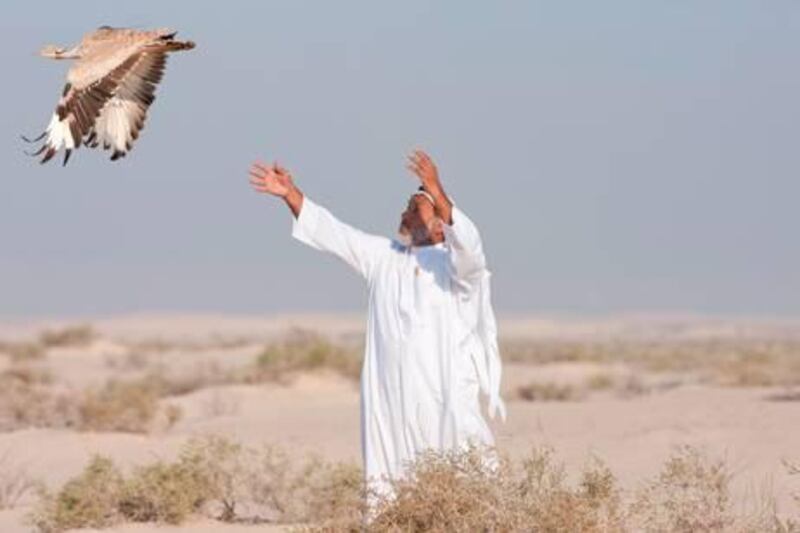ABU DHABI // More than 700 Houbara bustards bred in captivity have been released in UAE wilderness areas this year as part of efforts to preserve the endangered species.
The effort has grown each year since 2004, when five of the birds were released.
"This year we are releasing the highest number so far in the UAE," said Mohammed Al Baidani, the director general of the International Fund for Houbara Conservation (IFHC), which is overseeing the work.
The efforts will continue until February next year, with 1,350 birds scheduled for release in western and eastern Abu Dhabi, and in Dubai.
A bird with sandy-coloured plumage and thin, long legs, the Houbara has long been prized as game by Gulf falconers.
Experts say numbers are down by as much as 40 per cent in Central Asia. The decline is also evident in the UAE and other Gulf countries, where Houbara bustards fly to spend the winter.
The birds are being bred at the National Avian Research Centre in Sweihan, said Mr Al Baidani.
Some are forming the basis for a resident population in secluded parts of the UAE.
Upon their release, each bird is fitted with a ring that carries its number and the year of its release. Some are also fitted with radio and satellite equipment, allowing scientists to track their movements.
In 2007, for the first time, scientists saw signs that the birds were breeding. Between 2007 and this year, 69 chicks were produced from 44 nests.
"The survival rate is quite good, between 53 and 56 per cent," Mr Al Baidani said.
Some of the birds are being hunted, which is prohibited. But the area north of the motorway between Abu Dhabi and Al Ain has traditionally been a hunting ground, Mr Al Baidani said.
He said hunting should be managed, rather than banned.
"It is important for us if someone hunts Houbara to report it to us," Mr Al Baidani said.
Hunters who reported their activities would not be prosecuted, he said.
"This also is good for us, to know the pressure on the birds when they are released."





